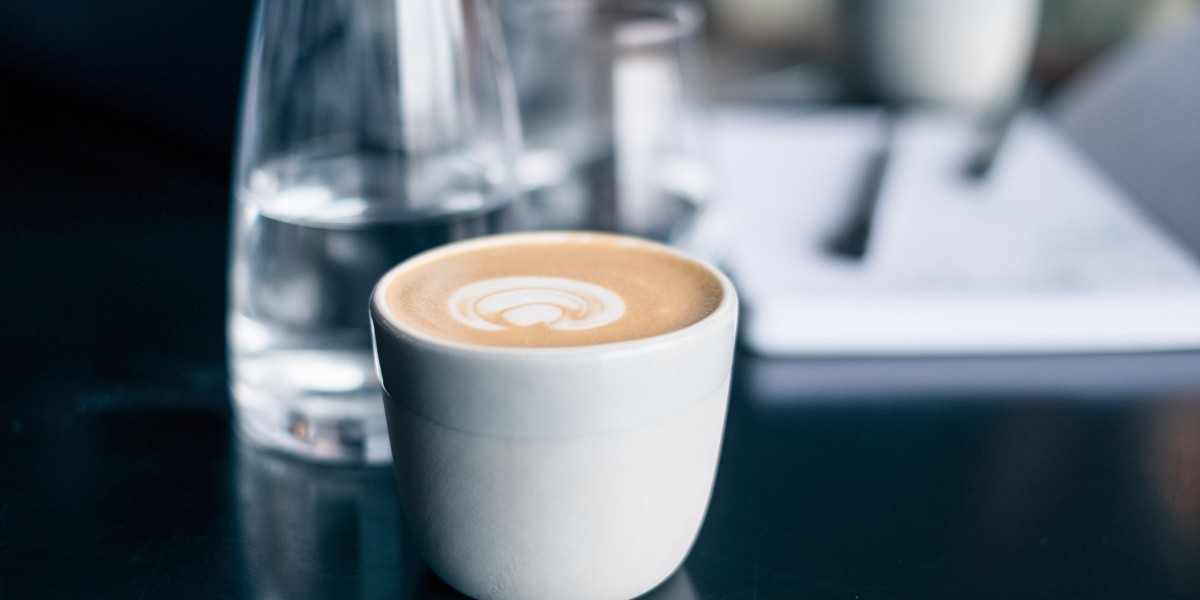Decoding the Purr-plexing Price of Cat Flap Installation: A Comprehensive Guide
For cat owners, few things are as liberating for both feline and human as the humble cat flap. Granting your whiskered buddy the flexibility to explore the fantastic outdoors (or merely the garden) on their own terms, while releasing you from the consistent responsibility of doorman, appears like a purr-fect option. However, before you envision your cat with dignity moving in and out at will, a vital question occurs: how much does cat flap installation actually cost?
The response, like the character of a cat entry door installation itself, is multifaceted and depends on a variety of factors. It's not a basic, one-size-fits-all price tag. Understanding these influencing aspects is crucial for budgeting and guaranteeing you get the right flap installed professionally and at a fair price. This article will delve into the complexities of cat flap installation expenses, breaking down the different elements and using guidance to help you browse this essential stage of pet-proofing your home.

Deciphering the Cost Factors: What Influences the Price Tag?
A number of crucial elements add to the final cost of cat flap installation. Let's explore these in detail:
Type of Cat Flap: The elegance of your chosen cat flap is a primary chauffeur of cost. Cat flaps vary from basic, manual designs to highly innovative, microchip-operated variations.
- Basic Cat Flaps: These are the most basic and most budget friendly options. Typically including a basic swinging door, they enable any cat (or small animal) entry. Installation for these is normally straightforward.
- Magnetic Cat Flaps: These make use of a magnet on your cat's collar to unlock the flap, preventing entry from strays or other area cats. They are an action up in price but offer enhanced security. Installation is a little more complex due to the magnetic mechanism.
- Microchip Cat Flaps: The most sophisticated type, microchip cat flaps read your cat's existing microchip, giving access only to them. This uses exceptional security and control over who enters your home. They are the most pricey type of flap and installation can be more intricate, often requiring a source of power if digitally run.
- Smart Cat Flaps: Extending beyond microchip innovation, wise flaps can connect to apps, using functions like curfew settings, activity tracking, and remote locking. These are premium choices, reflecting in both the flap cost and prospective installation complexities, particularly if they need electrical wiring or network setup.
Installation Surface Material: The product into which the cat flap will be set up significantly impacts the labor and tools needed, and subsequently, the price.
- Wooden Doors: The most convenient material to work with, wooden doors are normally the most cost-efficient to install a cat flap into. Requirement woodworking tools are usually adequate.
- Glass Doors or Windows: Installing a cat flap in glass is significantly more intricate and expensive. It normally needs a specialist glazier to cut a hole in the glass, typically including purchasing a custom-made glass panel with the pre-cut hole. Tempered or double-glazed glass contributes to the complexity and cost.
- Brick or Masonry Walls: Installation in brick or masonry walls can be challenging, needing specialized tools like drills with diamond-tipped core bits. It's frequently more time-consuming and labor-intensive, increasing the total cost.
- Metal Doors: Metal doors, particularly solid core varieties, can likewise provide challenges. Cutting through metal requires specific tools and knowledge, potentially increasing labor costs.
Installation Location and Accessibility: The place where you want the cat flap set up, and how quickly accessible it is, can impact the price.
- Ground Floor Doors: Generally the most convenient and most accessible places, leading to standard installation expenses.
- Upstairs Windows or Walls: Installation in higher places, especially if needing ladders or scaffolding, can add to the labor cost due to increased intricacy and security considerations.
- Difficult-to-Reach Areas: If the wanted area is behind furnishings, in a tight corner, or has other availability constraints, it may increase the time and effort needed for installation, thus affecting the price.
Labor Costs: Whether you choose DIY or professional installation, labor is an essential element.
- DIY Installation: While relatively free in terms of direct labor expenses, DIY installation needs your time, tools (which you might need to buy or lease), and carries the danger of errors that might lead to more expenditure.
- Professional Installation: Hiring a handyman, carpenter, glazier, or specialist cat flap installer will incur labor costs. These rates vary based on location, the professional's expertise, and the intricacy of the task. Per hour rates or repaired quotes are common. Professionals frequently bring their own tools and knowledge, ensuring an appropriate and efficient installation.
Extra Features and Complexity: Beyond the fundamental flap type and installation product, additional features can affect expenses.
- Tunnel Extensions: If installing through a thick wall or door, tunnel extensions may be required to develop a longer passage for your cat. These add to the product cost.
- Draft Excluders and Weather Seals: Higher quality flaps often feature better draft exclusion and weather condition sealing features, which might slightly increase the flap price however can conserve on energy bills in the long run.
- Complex Wiring (for Smart Flaps): If your picked wise flap needs electrical wiring to a source of power or network connection, this will add to the complexity and possibly the cost of professional installation.
Deciphering the Price Ranges: What to Expect to Pay
While accurate expenses vary geographically and depending upon specific project details, here are approximate cost varieties to offer you a basic idea:
- Basic Cat Flap Installation (Wooden Door, DIY): Material cost for a standard flap can vary from ₤ 15 - ₤ 40. Do it yourself installation 'labor' is your own effort and time.
- Standard Cat Flap Installation (Wooden Door, Professional): Including the flap and professional installation in a wood door, you may anticipate to pay in between ₤ 60 - ₤ 150.
- Microchip Cat Flap Installation (Wooden Door, DIY): Microchip flaps themselves cost more, varying from ₤ 50 - ₤ 150+. Do it yourself ends up being more intricate due to potentially needing to follow clear instructions and ensure appropriate positioning for the chip reader.
- Microchip Cat Flap Installation (Wooden Door, Professional): Professional installation of a microchip flap in a wooden door could vary from ₤ 120 - ₤ 250+, consisting of the flap and labor.
- Cat Flap Installation in Glass (Professional): This is significantly more costly. Anticipate to pay anywhere from ₤ 200 - ₤ 500+, possibly even more for custom glass panels or complicated double-glazing. This typically includes the cost of the specialist glazier, the new glass panel and the flap itself.
- Cat Flap Installation in Brick Wall (Professional): Brick wall installations are also more expensive, ranging from ₤ 150 - ₤ 400+, depending on wall thickness, flap type, and labor rates. This cost shows the specialized tools and additional time needed.
DIY vs. Professional Installation: Weighing the Pros and Cons
Deciding in between DIY and professional installation is a crucial step. Here's a breakdown to help you choose:
DIY Installation:
Pros:
- Cost Savings: Potentially saves money on labor costs.
- Versatility: You can set up at your own rate and schedule.
- Sense of Accomplishment: For some, DIY projects are gratifying.
Cons:
- Time Commitment: Can be lengthy, specifically if you're not experienced.
- Tool Investment: May need to purchase or lease tools.
- Risk of Mistakes: Errors during installation can result in damage, inappropriate functionality, or costly repairs.
- Warranty Issues: Incorrect installation might void the flap's service warranty or home insurance implications.
- Safety Concerns: Working with power tools and glass needs care.
Professional Installation:
Pros:
- Expertise and Experience: Professionals have the skills and understanding for appropriate installation.
- Efficiency: Installation is normally quicker and hassle-free.
- Proper Tools and Equipment: Professionals have the right tools for the task.
- Warranties and Warranties: Often provide service warranties on their work, offering assurance.
- Lowered Risk of Errors: Minimizes the opportunity of errors and guarantees proper flap performance.
- Benefit: Saves you effort and time.
Cons:
- Higher Cost: Labor expenses contribute to the overall expense.
- Scheduling: You need to organize an appropriate time for the professional to come.
Selecting the Right Installer: Ensuring a Quality Job
If you go with professional installation, picking the right installer is important. Consider these tips:
- Get Multiple Quotes: Contact several handymen, carpenters, glaziers (for glass installations), or specialist cat flap installers for quotes. Compare prices and services offered.
- Examine Reviews and Testimonials: Look for online reviews and testimonials to determine the installer's track record and quality of work.
- Inquire about Experience: Inquire about their experience particularly with Best Cat Flap Installers flap installations, especially if you have a specific key in mind or a difficult installation surface area.
- Verify Insurance and Licenses: Ensure they have suitable insurance coverage and licenses, providing security in case of accidents or damages.
- Clarify Warranty/Guarantee: Ask about service warranties on their workmanship and the flap itself, if applicable.
- Request for References: Request references from previous customers to get direct feedback.
Tips to Potentially Reduce Installation Costs:
- Choose a Simpler Flap Type: If budget plan is a significant concern, a basic or magnetic flap is more budget-friendly than a microchip or wise choice.
- Install in Wood if Possible: Wooden doors are the most affordable installation surface. If feasible, pick a wood door over glass or brick.
- Get Multiple Quotes and Compare: Shop around for professional installation quotes to ensure you're getting a competitive price.
- Consider DIY for Simple Installations (If Confident): If you come in handy and comfortable with standard woodworking, a DIY installation of a fundamental flap in a wood door might be workable and minimize labor costs.
The Long-Term Benefits Outweigh the Initial Cost
While the in advance cost of cat flap installation may look like an expense, it's essential to think about the long-lasting advantages. A cat flap provides:
- Convenience for you: No more consistent door duty.
- Flexibility for your weatherproof cat flap installation: Independent access to the outdoors or designated areas.
- Lowered Stress: Less meowing or scratching at doors for attention.
- Improved Home Hygiene: Can help minimize litter box odors if your cat gets rid of outdoors.
- Potentially Better Pet Behavior: Outdoor access can lower monotony and devastating behaviours in some felines.
Conclusion: Investing in Feline Freedom
Cat flap installation costs vary, influenced by flap type, installation surface, labor, and other aspects. By comprehending these factors and considering your DIY abilities and budget, you can make an informed choice. While professional installation typically comes with a higher cost, it provides know-how and comfort. Eventually, for numerous cat owners, the benefit, flexibility, and improved feline happiness offered by a cat flap make it a worthwhile financial investment, far surpassing the initial installation cost in the long run.
Regularly Asked Questions (FAQs) about Cat Flap Installation Costs
Q: What is the typical cost of cat flap installation?A: The average cost is highly variable, varying from around ₤ 60 for a standard flap in a wood door professionally installed, to upwards of ₤ 500+ for complicated installations in glass or with wise flaps.
Q: Is DIY cat flap installation advised?A: DIY is feasible for standard flaps in wooden doors for those with great DIY skills and tools. Nevertheless, for glass, brick, metal doors, or more complicated flap types like microchip or wise flaps, professional installation is highly recommended.
Q: How much more expensive is it to install a microchip cat flap compared to a basic one?A: Both the flap itself and the installation can be more pricey. Microchip flaps are costlier to acquire, and installation might need more look after appropriate sensor positioning, possibly increasing labor expenses somewhat.
Q: Are there any concealed costs connected with best cat flap installer flap installation?A: Potential concealed expenses can include:* Tunnel extensions for thicker doors or walls.* Specialized tools required for DIY.* Repair expenses if DIY installation is done improperly.* Replacement glass panels for glass door setups.* Additional electrical wiring for clever flaps.
Q: Can I set up a cat flap in a rental residential or commercial property?A: Generally, you'll need to get consent from your property owner before making any structural changes, consisting of setting up a cat flap.
Q: How long does cat flap installation normally take?A: Installation time differs. A fundamental flap in a wooden door may take a professional handyman 1-2 hours. More intricate setups in glass or brick, or for smart flaps, can take longer, possibly several hours or even need numerous visits if custom glass panels are required.
Q: Do exterior cat flap fitting flap installers provide guarantees?A: Reputable installers typically use service warranties on their craftsmanship. It's important to clarify service warranty information before hiring an installer. The cat flap itself will also typically included a maker's warranty.
Lists Summary:
Factors Affecting Cat Flap Installation Cost (Unordered List):
- Type of Cat Flap (Basic, Magnetic, Microchip, Smart)
- Installation Surface Material (Wood, Glass, Brick, Metal)
- Installation Location and Accessibility
- Labor Costs (DIY vs. Professional)
- Additional Features and Complexity (Tunnel extensions, wiring)
Pros and Cons of DIY Cat Flap Installation (Unordered List - Pros & & Cons sub-lists):
Pros:
- Cost Savings
- Flexibility
- Sense of Accomplishment
Cons:
- Time Commitment
- Tool Investment
- Threat of Mistakes
- Warranty Issues
- Safety Concerns
Benefits and drawbacks of Professional Cat Flap Installation (Unordered List - Pros & & Cons sub-lists):
Pros:
- Expertise and Experience
- Efficiency
- Correct Tools and Equipment
- Guarantees and Warranties
- Decreased Risk of Errors
- Convenience
Cons:
- Higher Cost
- Scheduling
This post aims to supply a thorough understanding of cat flap installation expenses, empowering readers to make educated decisions and budget plan effectively for this advantageous home improvement for their feline buddies.








